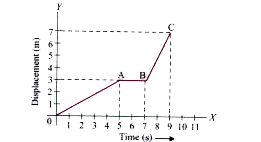Two atomic clocks allowed to run for a average life of an indian (say 70 years) differ by 0.2 s only. Calculate the accuracy of standard atomic clock in measuring a time interval of 1 sec.
Time interval =70 yrs
= (70×365+17) days (17 "additional days"<br>"are on account of" 17 "leap years during"70 yrs).
=25567days25567×24×60×60sec.
Difference = 0.2 s
∴Fractionalerrror=0.225567×24×60×60
=9.04×10−11≈10−10
Hence, accurancy shown by atomic clock is
1010s∈1sor 1s∈1010s
Topper's Solved these Questions
- BOOK - PRADEEPCHAPTER - PHYSICAL WORLD AND MEASUREMENTEXERCISE - Conceptual Problem65videos
PHYSICAL WORLD AND MEASUREMENT
- BOOK - PRADEEPCHAPTER - PHYSICAL WORLD AND MEASUREMENTEXERCISE - NCERT Exercises40videos
PHYSICAL WORLD AND MEASUREMENT
- BOOK - PRADEEPCHAPTER - OSCILLATIONS AND WAVESEXERCISE - multiple choice Questions13videos
OSCILLATIONS AND WAVES
- BOOK - PRADEEPCHAPTER - PROPERTIES OF BULK MATTEREXERCISE - Multiple choice questions7videos
PROPERTIES OF BULK MATTER
Similar Questions
If two atomic clocks, allowed to run for 60 years differ from eachother by 0.2s only, calculate the accuracy of standerd atomic clock measuring a time interval of 1 sec.
View SolutionTwo atomic clocks are allowed to run for 100 years and they differ by 0.1s only. What will be the accuracy of standard atomic clock in measuring 1s?
View Solution
Knowledge Check
- Question 1 - Select One
It is claimed that the two cesium clocks, if allowed t run for 100 yr, free from any disturbance, may differ by only about 0.02s. Which of the following is the corret fractional error?
A10−9B10−5C10−13D10−11 - Question 2 - Select One
The average life of a excited state of hydrogen atom is of the order of 10−8sec. the number of revolutions made by an electron when it returns from n=2 to n=1 is:
A2.28×106B22.8×106C8.23×106D2.82×106
It is claimed that tow cesium clocks, if allowed to run for 100 years, free from any disturbance, may differ by only about 0.02s. What does this imply for the accuracy of the standerd secium clock in measuring a time interval os 1s ?
View SolutionIf two celsium clocks differ only by 0.02 s in 200 yaers, what is the accuracy of cesium clock in measuring time intervals ?
View SolutionThe velocity of a particle are given by (4t–2) ms–1 along x–axis. Calculate the average acceleration of particle during the time interval from t = 1 to t = 2s.
View SolutionIn the figure, the displacement of a body is shown at different instants of time.
(i) Calculate the velocity of the body as it moves for (a) 0s to 5 s, (b) 5 s to 7 s, and (c) 7 s to 9 s.
(ii) Also, calculate the average velocity during the time interval 7 s to 9 s.
 View Solution
View SolutionThe distance travelled by a body and the time t are related by x=4−3t+2t2m .The average velocity in a time interval of 1 to 4 sec is m/s
View SolutionIn October 1971 an atomic clock was placed on a "Boeing 747" flying at an altitude of 10 km at a velocity of 1000 km/h eastwards. An identical clock, with time-keeping accuracy of 1 ns (1 nanosecond = 10−9) remained on the Earth. The plane was in flight 60 h, after which a comparison was made of the clocks' readings. What was the difference in the readings of the clocks in the plane and on the Earth? What were the contributions of the plane's elevation and its speed of flight?
View Solution

